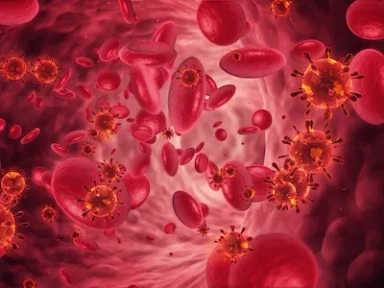VTE incidence after cesarean delivery
Venous thromboembolism incidence in patients recommended for pharmacologic prophylaxis after cesarean delivery based on different risk stratification guidelines.
Main Takeaway
The proportion of patients at risk of VTE following cesarean delivery meeting the criteria for pharmacologic prophylaxis (from 0.2% to 73.4%) and the incidence of VTE (from 2.5 to 35.2 per 1,000 deliveries) varied widely based on the guideline criteria employed (2011 ACOG, 2012 ACCP, 2015 RCOG and 2018 ASH)
Why This Matters
In the US, VTE is a leading cause of pregnancy-related morbidity and mortality, particularly after cesarean delivery; however, guidelines differ in the criteria suggested for VTE Prophylaxis, possibly leading to notable differences in clinical practice
Study Design
This retrospective US cohort study used data from the Nationwide Readmissions Database from October 2015 through December 2017 to identify patients undergoing cesarean delivery.
- Key inclusion criteria:
- cesarean delivery
- only first cesarean delivery in a calendar year for a given patient
- patients were to be followed within the same calendar year, and within the same US state
- Key exclusion criteria:
- non-residents of the delivery state
- patients who delivered in December
Key Results
Patient Population
- Overall, 1,235,149 cesarean delivery hospitalizations from 4,620 hospitals were included in the analysis (mean age = 29.8 years; mean length of stay for hospitalization = 3.5 days)
VTE Prophylaxis
- There was a large variation in the percentage of patients meeting criteria for pharmacological prophylaxis:
- ASH 2018 (0.2%)
- ACOG 2011 (0.3%)
- ACCP 2012 (16.2%)
- RCOG 2015 (73.4%)
VTE Incidence
- The overall incidence of VTE at 330 days after cesarean delivery was 2.1 per 1,000 hospitalizations (95% CI: 2.0, 2.2)
- The incidence of VTE (per 1,000 deliveries) in patients at elevated risk post cesarean delivery varied widely according to the guideline criteria employed:
- RCOG 2015 (2.5%)
- ACCP 2012 (5.6%)
- ACOG 2011 (31.7%)
- ASH 2018 (35.2%)
- All criteria identified low- and elevated-risk populations whose risk of VTE were statistically significantly different from each other, with varying relative risks:
- ASH 2018 (RR = high risk/low risk: 17.3; 95% CI: 12.3, 22.2)
- ACOG 2011 (RR: 15.7; 95% CI: 11.7, 19.9)
- ACCP 2012 (RR: 3.9; 95% CI: 3.4, 4.3)
- RCOG 2015 (RR: 2.2; 95% CI: 1.9, 2.5)
Limitations
- Use of administrative (billing) data may have likely resulted in measurement errors in the recording of VTE incidences
- The use of VTE prophylaxis could not be observed in the available data and this could have impacted the incidence of VTE reported in this population
- The NRD is an inpatient-only dataset, hence any VTE identified/managed on an outpatient basis were excluded
- Federspiel JJ, Wein LE, Addae-Konadu KL, Darwin KC, Talamo LE, Myers ER, et al. Venous thromboembolism incidence among patients recommended for pharmacologic thromboembolism prophylaxis after cesarean delivery in selected guidelines. J Thromb Haemost. 2021;19(3):830–838. doi: 10.1111/jth.15218. PMID: 33345404




